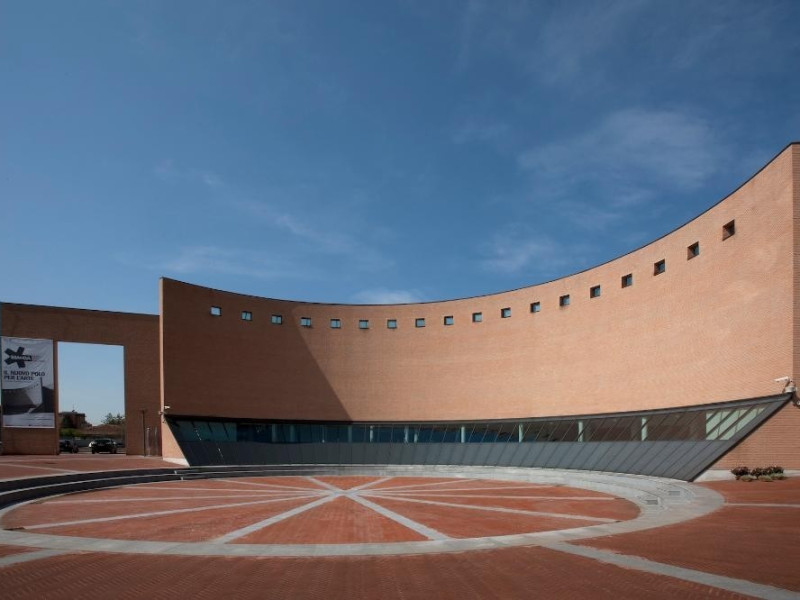Destinazioni - Comune
Gallarate
Where
Gallarate (Varese)
Gallarate (Lombard: Galaraa) is a city and comune of Alto Milanese of Lombardy, northern Italy, in the Province of Varese. It has a population of some 51,700.
It is the junction of railways to Varese, Laveno and Arona (for the Simplon). Some 10 kilometres (6 miles) to the west are the electric works of Vizzola, where 23,000 hp are derived from the river Ticino. Its territory is crossed by the river Arnetta, and belongs to the Ticino River National Park.
The city in the first part of 19th century had a strong textile industry.
History
Founded by the Gauls and later conquered by the Romans, Gallarate was mentioned as an important vicus or village in documents dating back to the Roman conquest of what was then called Gallia Cisalpina. During the Frankish hegemony, a castle was erected upon the remains of the original Roman fortifications located beside the still existing Basilica of Santa Maria. The castle does not exist anymore, but its ancient location is identified through the city’s topography and by the street name Via Postcastello.
After the obliteration of Castelseprio by Ottone Visconti in 1287, Gallarate became the capital of the Seprio, a vast and important county at the time. During these years, Gallarate saw a period of prosperity and economic growth that would last for the entire reign of the Visconti’s control, which continued until the beginning of French rule two centuries later (1498). Documents in the National Archives refer to Gallarate as an important centre of commercial exchange between both Italian and foreign markets, particularly for cotton, drapes, flax and textiles. Distinguished families such as the Rosnati, Reina, Masera, Palazzi, Macchi, Curioni, Mari and the Guenzati represented the nobility and the merchant classes. This period was also noted as a time of great civic improvement and the beginning of Gallarate as a center of industrial activity.
In the late 15th century, the city fell under foreign domination, initially under the Spanish and then under the French (and then again Spanish and their Austrian successors), through the 16th and 18th centuries. In between this political instability, Gallarate became a private fief of some of the competing nobles and powerful Italian families such as the Bentivoglio, Pallavicino, Caracciolo, Altemps, Visconti, Castelbarco.
Gallarate became a part of the Kingdom of Italy in 1859, and received the honorary title of city with a royal decree on December 19, 1860.
By the latter half of the 19th century modern industry had begun to take over many areas of Italy. In a few decades, Gallarate became an important industrial city. This period was also marked by heavy social tensions brought about by the rapid political and economic changes wrought by Gallarate’s own industrial revolution. Nowadays, Gallarate’s industrial structure no longer includes these giant industrial powerhouses of the past. Their existence, however, is still marked out by the presence of the high chimneys, which are still visible along Gallarate’s skyline. Many of the old Liberty-style buildings, where thousands of Gallaratesi worked during the past century-and-a-half, have been turned into new modern multi-level shopping centers and plazas.
Main sights
Romanesque church of St. Peter. It was built in the 11th to 13th centuries, including some Gothic elements. The interior has a nave without aisles. The façade, the apse and the sides are characterized by arcades supported by small columns forming a fake loggia. It was declared national monument in 1844
Baroque church of Sant'Antonio Abate
Sanctuary of Madonna di Campagna, dating to the early 17th century.
Church of San Zenone (18th century)
Church of San Rocco (16th century)
Historical pharmacy Dahò, where the carbonari used to hide in the 19th century.
Economy
Air Italy has its head office in Gallarate. In the 19th and 20th centuries Gallarate was an important centre for textile industry. Now it is a local hub for transport and high-tech industries.
Education
The Sistema Bibliotecario Consortile Antonio Panizzi has its main offices in Gallarate. The system operates the Biblioteca Civica " Luigi Majno " in Gallarate. Gallarate is also the seat of the Aloysianum, a former Jesuit college, which is now a Jesuit cultural centre with an important library. Carlo Maria Martini spent there the very last years of his life.
Transport
Gallarate railway station, opened in 1860, is the junction of the railway lines Domodossola–Milan, Luino–Milan and Porto Ceresio–Milan.
The station is stop for several long-running trains (Eurocity from Milan to Geneva and Basle), of regional trains from Milan to Domodossola, and of line S5 of Milan suburban railway service, as well of line S30 of Ticino railway network.
Gallarate is also very close to the International Airport of Malpensa.
Administration
References
External links
Official website (Italian)
This article incorporates text from a publication now in the public domain: Chisholm, Hugh, ed. (1911). Encyclopædia Britannica (11th ed.). Cambridge University Press.


